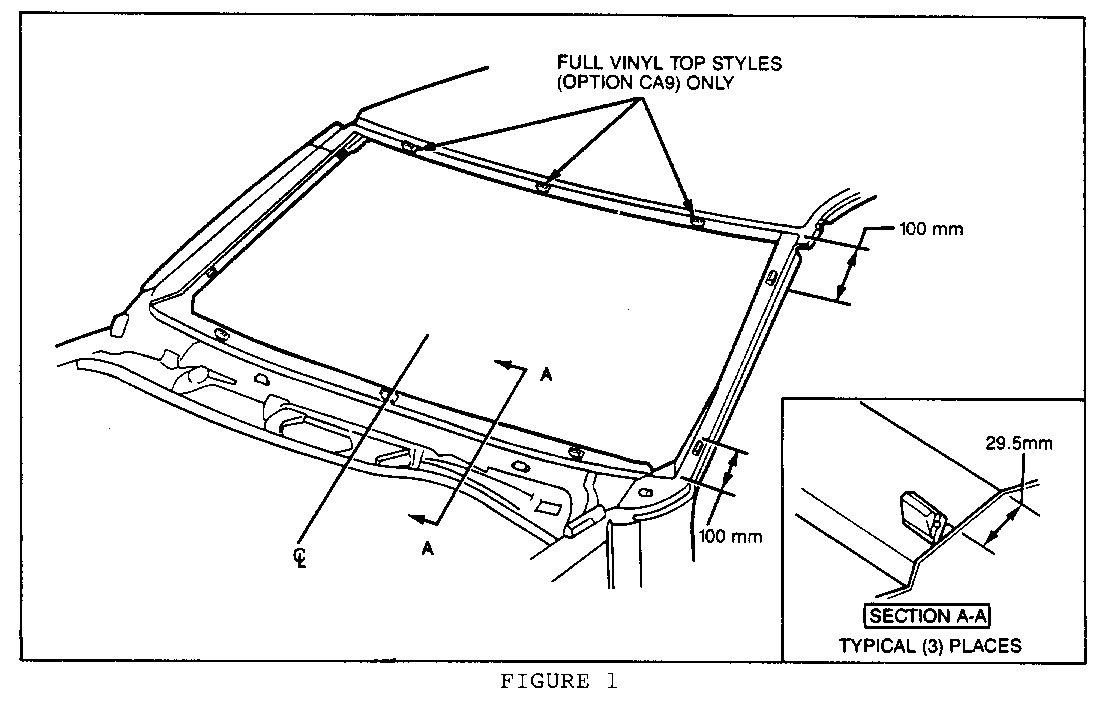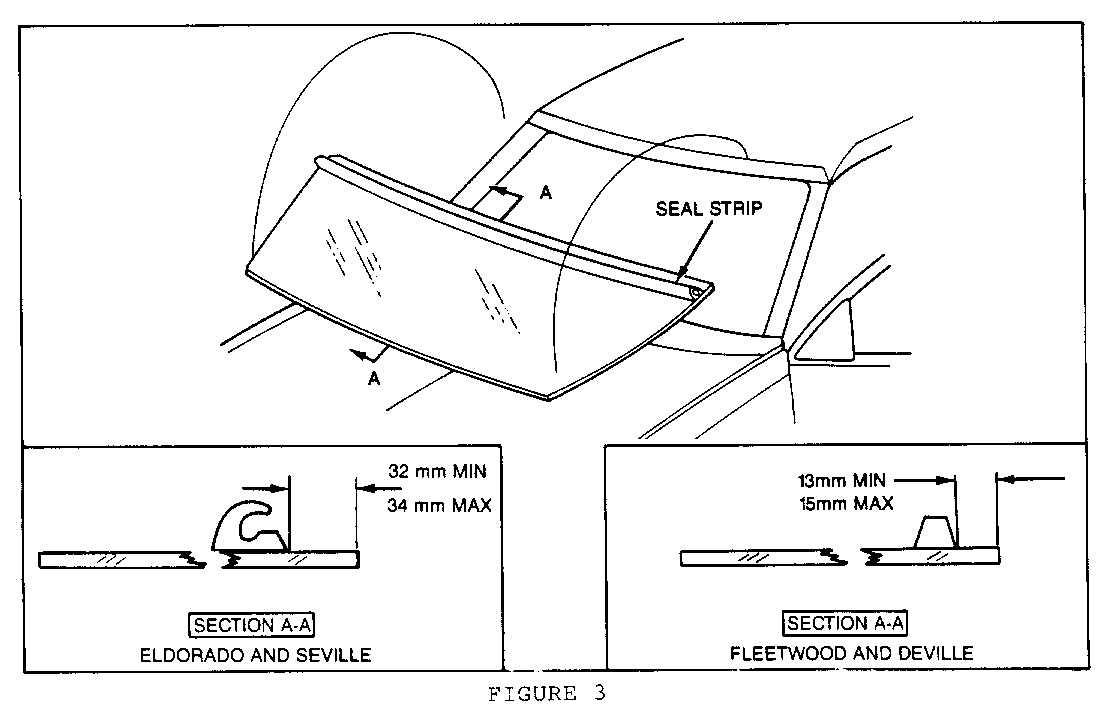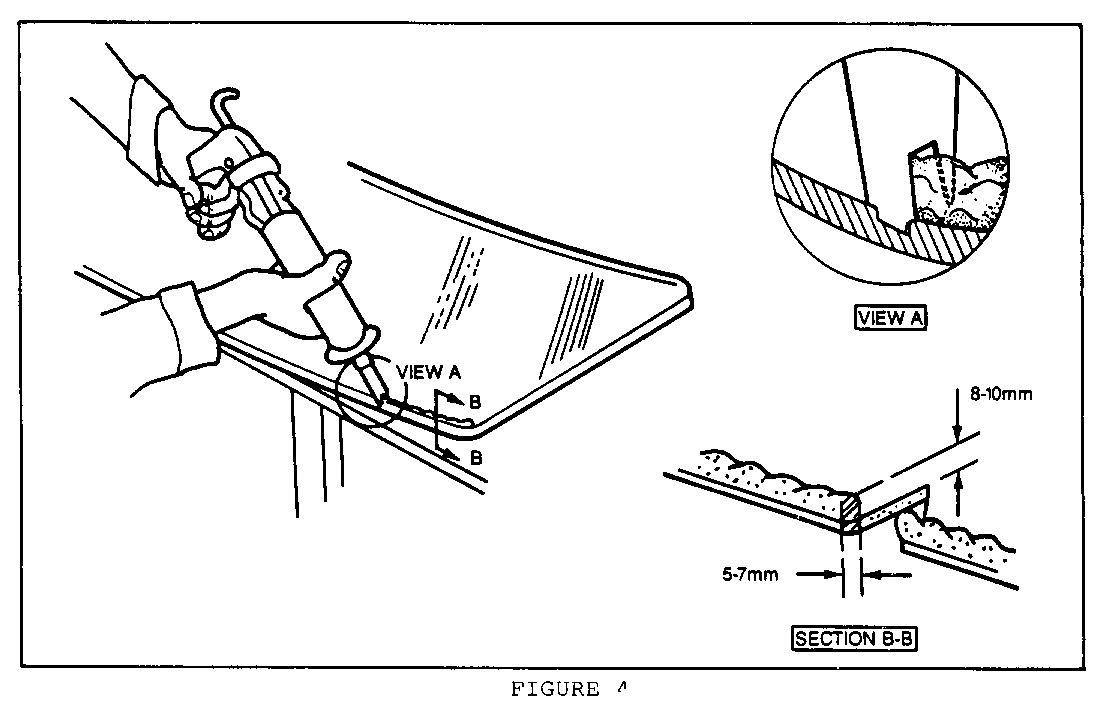WINDSHIELD REMOVAL & INSTALL. SERVICE MANUAL REVISION

VEHICLES AFFECTED: 1985-1989 C, 1986-1989 E/K
The following procedure should be followed when replacing the windshields on 1985-1989 C-Cars and 1986-1989 E/K-Cars. This procedure supersedes the procedures given in the past Body Service Manual.
1. Place protective coverings on vehicle to prevent damage to paint or interior.
2. Remove wiper arms, windshield reveal mouldings, and glass supports.
3. Using a razor or utility knife, make a preliminary cut around the entire perimeter of glass staying as close to the edge of the glass as possible.
4. Using cold knife, J-24402-A or equivalent, cut out windshield keeping blade as close to the edge of glass as possible. Remove windshield.
5. Using a sharp scraper or chisel, remove the old urethane from the window opening.
It is not necessary to remove all traces of the urethane, but there should not be any excessive amounts or loose pieces left.
6. Check opening for uneven sheet metal and/or spot weld burrs. Rework as required to eliminate disruptive surfaces.
NOTICE: If refinishing or painting operations are required or painted surface is exposed during removal of material, black body primer should be applied to exposed area.
7. Locate and attach spacers, P/N 20603560, around window opening. For E/K-cars, refer to Figure 1. For 1985-1988 C-Cars, refer to Figure 2. 1989 C-Cars do not use spacers, they must use the original J-type upper reveal moulding.
8. Position windshield glass into opening. Align for uniform fit to roof and windshield pillars.
With glass in proper position in opening, apply a piece of masking tape over edge of glass and adjacent body pillar. Slit tape vertically at edge of glass. During installation, tape on glass can be aligned with tape on body to guide glass onto desired position.
9. Remove windshield from body and prep as follows utilizing primers contained in the urethane repair kit number 993110:
A. Clean windshield with general glass cleaner.
B. Apply clear primer glass prep No. 1 to entire perimeter of glass edge inboard (approximately 12mm). Wipe primer off with a clean, dry cloth.
C. Apply black glass prep No. 2 primer directly over clear primer area.
NOTE: Two kits will be required per vehicle.
10. On C-Cars apply insulation strip, P/N 25540623, along lower inboard edge of glass so as to allow 12-15mm of glass clearance from edge of glass to bottom edge of insulation strip. Refer to Figure 3.
On E/K-Cars apply insulation strip, P/N 20375201, along lower inboard edge of glass so as to allow 32-34mm of glass clearance from edge of glass to bottom edge of insulation strip. Refer to Figure 3.
11. Trim urethane dispense tip as shown in Figure 4.
12. Apply urethane bead to glass ensuring a bead size of 7mm wide by 8-10 mm high.
13. Position glass in opening onto spacers. with glass centered in opening, place glass on lower supports and use tape applied in step 8 to carefully place glass in proper position.
14. Press glass firmly to wet-out and set adhesive. Use care to avoid excessive squeeze out which may cause an appearance problem.
15. Except where push-in molding will be inserted, paddle excess urethane around glass to ensure water-tight seal. If necessary, paddle additional material to fill voids in seal.
16. Remove protective coverings from body.
17. Install "push-in" type reveal mouldings.
18. If reveal mouldings won't stay in proper position, use cloth waterproof tape to hold them in position until adhesive is cured.
19. Water test car using a soft spray. Use warm or hot water if available. Do not direct hard stream of water at fresh adhesive material. If any leaks are found, paddle in extra adhesive at leak point using a small disposable brush or flat-bladed tool. Water applied on top of urethane adhesive will speed up the cure of the urethane.
20. Install remaining reveal mouldings and wiper arms.
21. Vehicle must be kept at a minimum of 18 degrees (65 degrees F) for six hours to allow material to cure.
22. Remove tape.




General Motors bulletins are intended for use by professional technicians, not a "do-it-yourselfer". They are written to inform those technicians of conditions that may occur on some vehicles, or to provide information that could assist in the proper service of a vehicle. Properly trained technicians have the equipment, tools, safety instructions and know-how to do a job properly and safely. If a condition is described, do not assume that the bulletin applies to your vehicle, or that your vehicle will have that condition. See a General Motors dealer servicing your brand of General Motors vehicle for information on whether your vehicle may benefit from the information.
